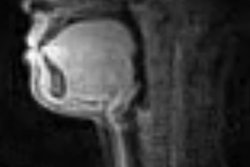
An internal review of inpatient body MRI scans by clinicians at Beth Israel Deaconess Medical Center showed room for improvement in a number of key performance areas, according to a study published online September 24 in the American Journal of Roentgenology.
Many body MRI scans were poor-quality, and they "often give redundant information," the authors wrote. In addition, some 30% of exams performed over a 10-year period could have been done on an outpatient basis, and 21% yielded no new information at all.
"With these results, our institution hopes to implement a decision-support team that can work with ordering clinicians to help use inpatient body MRI examinations more appropriately, by performing them in the right patient populations at times when the results will affect inpatient clinical management," wrote lead author Dr. Kevin Beker and colleagues from Beth Israel's Division of Clinical MRI.
The researchers reviewed the number of inpatient body MRI scans performed at the 649-bed academic medical center between fiscal years 2006 and 2015. The center performed 637 body MRI scans in fiscal 2006, a number that rose significantly to 871 body exams in fiscal 2015.
The value and appropriateness of the scans were evaluated on three criteria:
- Quality, including whether the patient could complete the entire exam
- Yield, including whether the scan answered the clinical question or changed the patient's management
- Timing, or whether the exam was appropriate for the inpatient setting
The most relevant findings were in the not-so-small numbers. For example, 352 scans (40%) were of limited quality and 20 scans (3%) were of nondiagnostic quality. Conversely, only 499 scans (57%) were of normal quality.
In addition, while 74% of the body MRI scans resulted in clinically relevant information, the remainder (26%) yielded no new information or incidental findings.
| Results of inpatient body MRI scans | |
| No. of scans | |
| Negative findings | 351 (40%) |
| Positive findings | 294 (34%) |
| No new information | 181 (21%) |
| Incidental findings that required action | 24 (3%) |
| Nonurgent incidental findings | 21 (2%) |
Interestingly, the researchers believe that 263 (30%) of the body MRI scans could have been performed on an outpatient basis.
"We believe that a detailed analysis of appropriateness alongside quantity-oriented trends of body MRI utilization will serve the purpose of successfully measuring the current utilization state of a focused academic abdominal MRI division and aid in the process of increasing productivity by improving volume, quality, yield, and timing of all MRI studies," Beker and colleagues concluded.



















